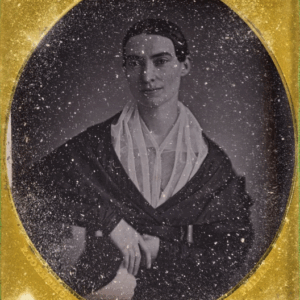JTF (just the facts): Self-published in 2020 (available here). Stapled softcover (297×215 mm), 160 pages, with 160 color reproductions. There are no texts or essays included. (Cover and spread shots below.)
Comments/Context: While many contemporary photographers like to consider themselves risk takers and improvisers in one way or another, few have consistently embraced photographic experimentation as wholeheartedly as Daisuke Yokota. In the past decade, Yokota has been a whirlwind of process-based exploration, restlessly testing new approaches and churning out photobooks that gather together his results. Some efforts have been expressive and performative, others methodical and iterative. He’s played with rephotography and photocopying, acid and chemical washes, physical intervention with dirt, dust, and hair, and other less decipherable approaches, deliberately breaking down recognizable imagery into uncertainty or building abstractions out of accidents and residues. The through line connecting all this activity has been a structured progression forward, each project building on the lessons learned from his previous tests.
While much of Yokota’s earlier work was an exploration of the nuances and limits of black and white imagery (as seen in his 2014 photobook Vertigo here, his 2015 photobook Taratine here, and his 2017 photobook Cloud here), in recent years, the Japanese photographer has added effervescent color experimentation to his artistic toolbox. 160 sheets brings us up to date with Yokota’s current color investigations, offering a visual explosion of swirled color abstraction.
How Yokota generates some of the effects in these images is a bit of a mystery. Given small circular dots in some of the corners and obvious pulling away from some of the edges, we can assume the compositions are essentially full frame works, scanned and enlarged for publication. Careful looking reveals some small details we can attempt to identify or categorize – cracked, peeled, or crumpled emulsions; fingerprints; bubbled chemicals; sticky residues from sandwiched negatives; scrape marks; and crusty surface debris. In a sense, the techniques are visually reminiscent of the kind of interventions and distortions Lucas Samaras was making to Polaroid prints in the 1970s, but amplified and pushed much further toward abstract extremes and breaking points.
Yokotoa’s results are certainly expressive, and even perhaps painterly, if we apply that word in a more technical or scientific manner. Many of his compositions feel like experiments in fluid dynamics, the colors squished and poured in confined areas that cause them to intermingle in unexpected ways. Others are intricately layered, with blobs of color overlapping, intermixing, and cutting across each other. And still others take us back to descriptive comparison and analogy – they look like frozen ice, marbled paper, Morris Louis’s poured paint canvases, tinted cellophane, or moldy walls, or some combination thereof. Yokota’s colors waft and boil, with gradients dissolving and surfaces becoming transparent, each individual composition a new set of energetically swirled materials.
160 sheets is exactly what its title implies – 160 individual works, shown in ample size two to a spread, and stapled together into a no nonsense photobook (just as Cloud was). There are no explanations, no backstories, no interpretations – just a parade of works that goes on and on, each image a variation within the constraints Yokota has set for himself. What this approach implies is a process of trying, and trying again, and trying again, each outcome not necessarily judged “good” or “bad”, but simply a rethrowing of the artistic dice. And while we can discern some patterns to how Yokota is engaging with his materials, the aesthetic possibilities still seem close to infinite – some may prefer bolder colors combinations, while others may get lost in textural detail or surface interest, but each one is a valid “solution” to the artistic problem Yokota is wrestling with.
Yokota’s single-mindedness is emblematic of how many artists find their way – keep pressing ahead and the openings for new innovation will ultimately present themselves in the knowledge gained from the ongoing effort. It’s an approach that embraces the messiness of prolificness instead of precision of perceived control. Yokota has always been willing to allow chance to disrupt his methods and processes, and in these new works, he seems to have let go even further. That openness to serendipity and improvisation gives these compositions their consistent vitality. The pictures feel lively and filled with implied motion, each wave and billow of color a unique outcome snatched from a fleeting moment in time.
Collector’s POV: Daisuke Yokota is represented by Jean-Kenta Gauthier in Paris (here). Yokota’s works have little secondary market history at this point, so gallery retail likely remains the best option for those collectors interested in following up.





























